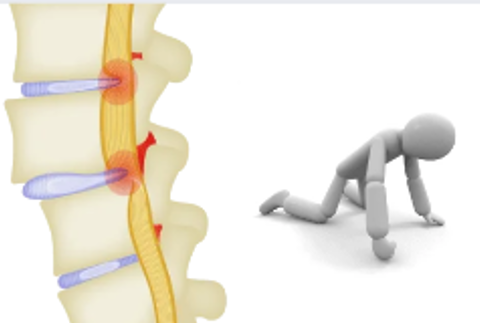
Intermittent claudication is numbness or pain in the legs and feet that occurs when walking, accompanied by the inability to walk for a while, followed being able to walk again after a short rest. It is a typical symptom of spinal canal stenosis.
What are the causes of intermittent claudication?
It is caused by arteriosclerosis obliterans, which occurs when arteriosclerosis prevents the blood vessels from delivering sufficient blood. The blood flow is reduced, and the leg muscles do not receive enough blood and oxygen, resulting in the appearance of leg pain.
“Lumbar spinal stenosis” caused by nerve compression in the spinal canal. Symptoms occur due to compression of nerves in the spine.
The mechanism of intermittent claudication can be divided into three types: “nerve root type,” “cauda equina type,” and “mixed type”.
Why are recurrences so common?
Spinal canal stenosis, the main cause of intermittent claudication, occurs when the central component of a compressed intervertebral disc (the part of the layer called the annulus fibrosus) cracks, causing the central component to protrude, and the protruding part (herniated disc) narrows the spinal canal.
Conventional surgical procedures relieve symptoms by removing said herniated disc, but since the cracks in the disc have not been repaired, the disc may herniate again. This is the main cause of recurrence, which is why the disease is said to be difficult to cure completely.
The Cellgel method used at our clinic consists in injecting a drug that fills the cracks in the intervertebral disc, which then forms a gel and replaces the cracks, thereby providing a fundamental cure.
Written by the Administrative Director at ILC International Lumbago Clinic Tokyo



